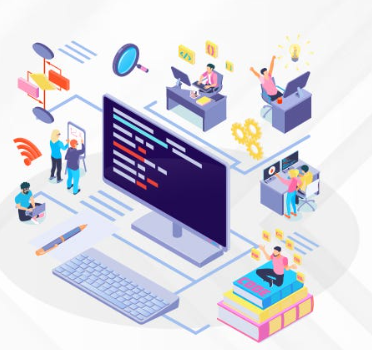
Software development is a multifaceted endeavor, often requiring developers to manage competing priorities, collaborate with different teams, and meet varying stakeholder needs. With the growing complexity of applications and the need for frequent system updates, developers must stay organized and adaptable, all while maintaining a focus on security and performance.
The software development methodology you choose can significantly impact the success of a project. These methodologies provide a structured framework to guide development from initial concept to final testing. However, no single approach works for all projects. The best methodology for your team depends on project goals, complexity, and the nature of the work.
This blog delves into the importance of selecting the right software development methodology and reviews some of the most commonly used approaches in the industry.
What is a Software Development Methodology?
A software development methodology is a systematic approach to planning, structuring, and executing software development projects. It defines the processes and stages that a project will follow, ensuring all tasks are completed within the project timeline and according to specifications. With a solid methodology in place, your team is aligned, minimizing the risk of miscommunication and ensuring a smoother workflow.
Popular Software Development Methodologies
There are various methodologies to choose from, each with its strengths and weaknesses. The methodology you select will affect your team’s productivity, the pace of the project, and the overall quality of the final product. Below is an overview of some of the most widely used development methodologies.
Agile Development
Agile is a flexible and iterative approach to software development that focuses on collaboration, customer feedback, and the ability to adapt to change quickly. It is particularly effective when requirements are expected to evolve throughout the project. Agile methodologies emphasize regular communication, frequent deliveries, and ongoing improvements based on stakeholder feedback.
Within Agile, there are several frameworks, including Scrum and Kanban, each with its own approach to managing tasks and collaboration.
Scrum
Scrum is an Agile framework that organizes work into short, time-boxed iterations called sprints, typically lasting between two to four weeks. Scrum teams are cross-functional and led by a Scrum Master, who ensures the team stays on track. Scrum focuses on transparency, inspection, and adaptation, making it ideal for projects where requirements and priorities may change frequently.
Kanban
Kanban is another Agile framework, but it is focused on continuous delivery and visualizing the workflow. It uses a Kanban board to track progress and limit the number of tasks in progress at any given time. This helps prevent bottlenecks and ensures teams focus on completing tasks before moving on to new ones. Kanban is well-suited for ongoing projects with continuous work rather than distinct phases.
Waterfall Model
The Waterfall model is a traditional, linear approach to software development where each phase flows sequentially into the next. The process begins with extensive planning and progresses through design, implementation, testing, deployment, and maintenance. Waterfall works best for projects with well-defined requirements that are unlikely to change during development. It is less flexible than Agile but can be highly effective for projects with clear, fixed outcomes.
V-Model (Verification and Validation)
The V-Model is an extension of the Waterfall model, with a focus on validation and verification. Each stage of development is directly associated with a corresponding testing phase. This methodology is particularly suited for projects where quality assurance is critical, such as in industries requiring high reliability and compliance. Like Waterfall, the V-Model is less adaptable to changes and is more rigid in its approach.
Factors to Consider When Choosing a Methodology
Choosing the right software development methodology depends on a variety of factors, including the project’s complexity, goals, timeline, and team dynamics. Below are some key considerations when making your decision.
Project Scope and Complexity
The complexity of the project plays a major role in selecting a methodology. For larger, more complex projects with extensive documentation and predictable outcomes, Waterfall or V-Model might be a better fit. These methodologies offer structured, detailed planning and ensure clear documentation throughout the development process. For smaller, less complex projects or those requiring rapid iteration, Agile methodologies like Scrum or Kanban may be more effective.
Time to Market and Delivery Frequency
If your project requires quick development cycles and regular updates, Agile is often the best choice. Agile’s iterative approach allows teams to release smaller parts of the product frequently, enabling faster time-to-market. Waterfall, with its more rigid structure, works best for projects that require detailed planning and a single, cohesive release.
Budget and Resources
Agile can be more cost-effective for projects with evolving requirements since it allows teams to pivot quickly without incurring excessive costs. Waterfall, on the other hand, can help with more predictable budgeting since its defined stages make it easier to estimate costs upfront. Consider the financial resources available and the level of flexibility required when deciding on the methodology.
Team Dynamics
The size and experience level of your team also play a crucial role in methodology selection. Agile methodologies often require highly skilled and collaborative teams that are comfortable making decisions quickly and adapting to change. For teams that are less experienced or have fewer resources, Waterfall or V-Model may be a better fit, as these approaches offer more structure and clear guidelines.
Stakeholder Involvement
If your project requires frequent stakeholder engagement and feedback, Agile’s focus on continuous collaboration is ideal. Agile allows for regular check-ins with stakeholders, ensuring that the development process aligns with their needs. For projects with minimal stakeholder involvement, Waterfall or V-Model may be more appropriate, as they involve less frequent communication and a more predictable timeline.
Conclusion
There is no one-size-fits-all approach to software development. The right methodology depends on factors such as project complexity, team dynamics, and timeline. By carefully considering your project’s needs, you can choose the methodology that best aligns with your goals, ensuring a smoother development process and a successful end product.












